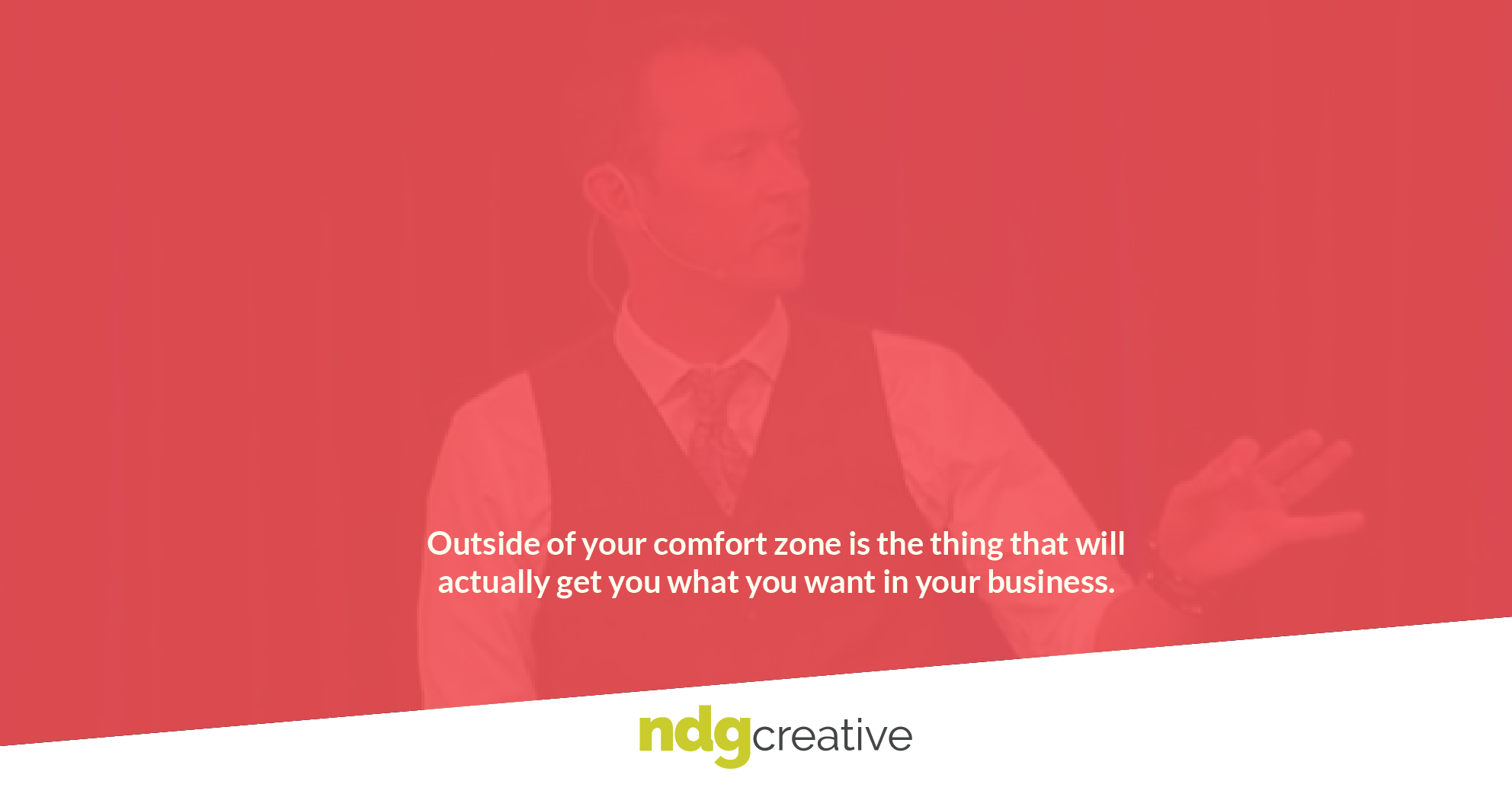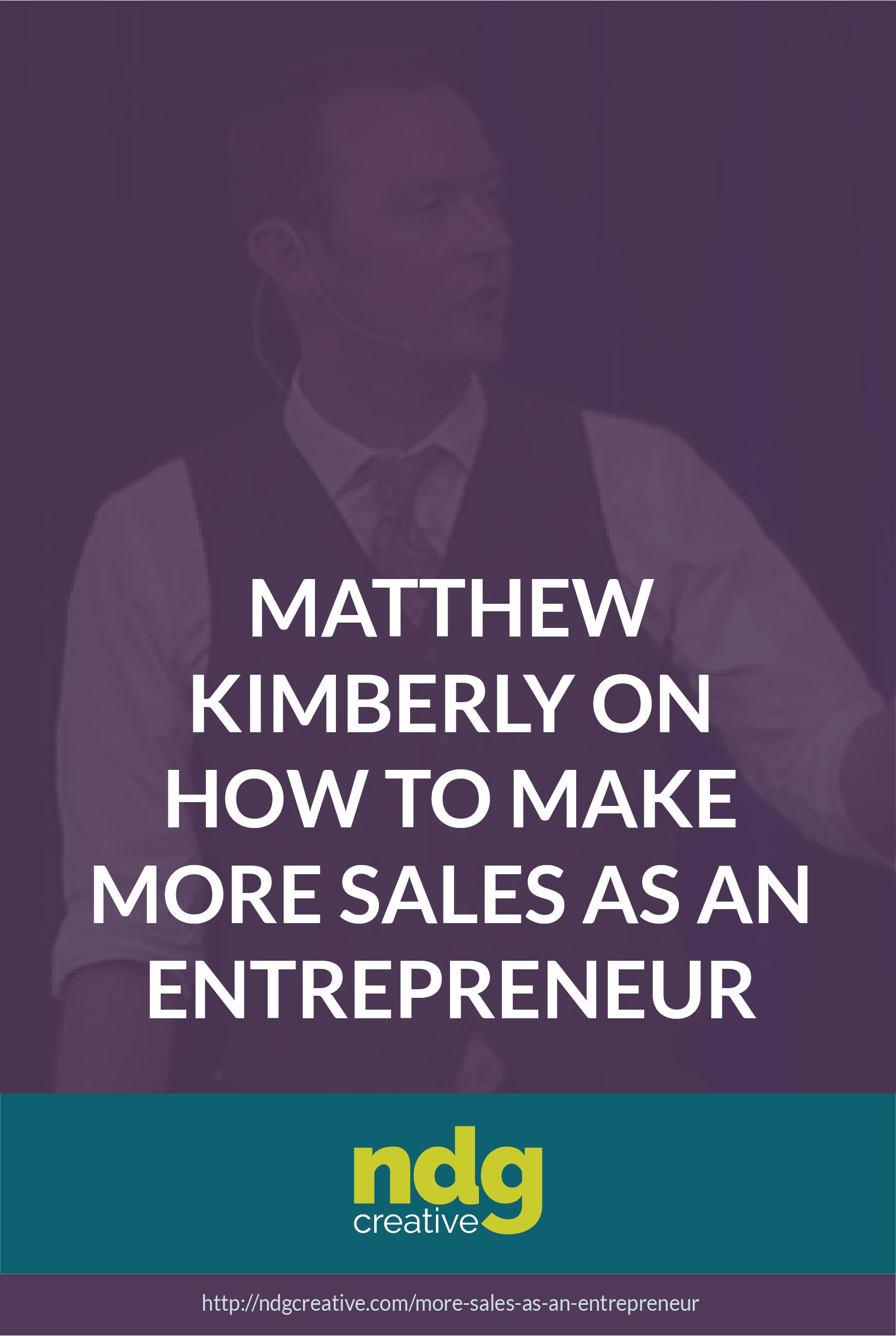How to Make More Sales as an Entrepreneur
I didn’t know much about Matthew Kimberly before I saw him on stage at Todd Herman’s 90 Day Year Live Event, but I’d been told he was funny and extremely knowledgeable about the dirty business of… dum dum dum… SALES. (Yuck, right?) So I went to watch him give his presentation titled Fastest Route To The Money: How To Get More People To Say ‘Yes’ Without Any Hard Work. I was not disappointed.
We focus so much on marketing in online business. Content creation, tactics, strategies, and funnels. Heck, that’s what I do. But when it comes right down to it, the difference between you and that person making 7 figures and living in Malta (yes, that’s where Matthew lives) is the ability to actually have those difficult conversations with actual humans who you are trying to convince to buy your thing. Yep. I know that’s not what you want to hear, but it’s so true, and I’ve heard it time and again from various sources. I was really looking forward to hearing Matthew’s take on this, and coming away with some new strategies!
Matthew started his talk by telling us all that we were focused on the wrong things in our online businesses.
We are caught up in looking for approval rather than results.
We’re tracking vanity metrics like “likes” and “follows”. We’re trying to be celebrities before learning to actually run successful businesses. Ouch. #truthbomb
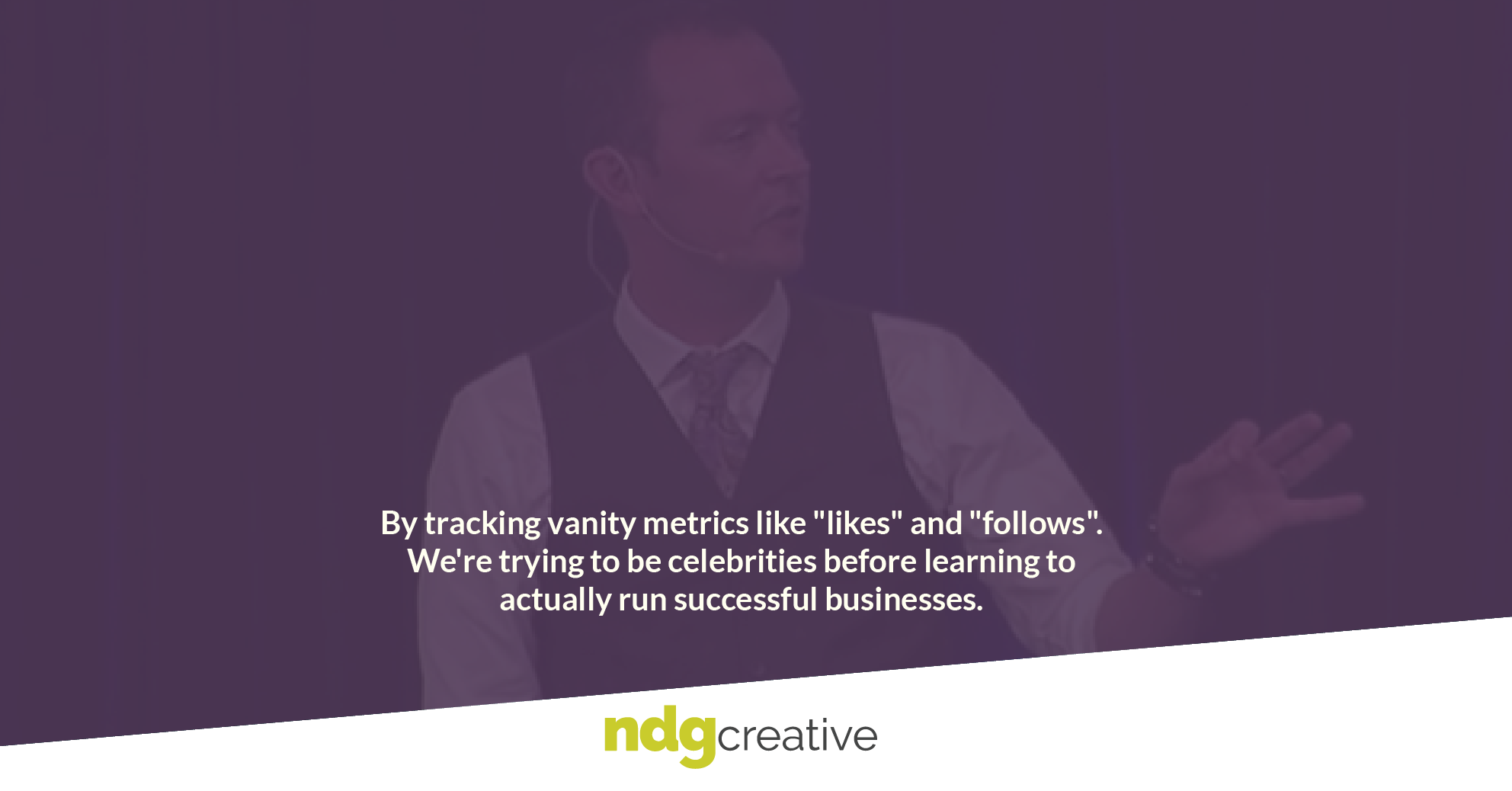
Matthew gave this example that I loved (and that made the whole room laugh in that “ok, yep, you caught us” kind of way).
Your local auto mechanic, dentist, and corner store owner do not need a “mission and vision” to run successful businesses. They just need to know how to serve their customers and get more of them.
Yep. I know right? So simple, and yet so… well, yeah, just simple.
He went on to validate that we all went into business for ourselves for basically the same reasons… Some variation on Freedom, Fun, and Flow. Creating a life that works for us, instead of punching a clock.
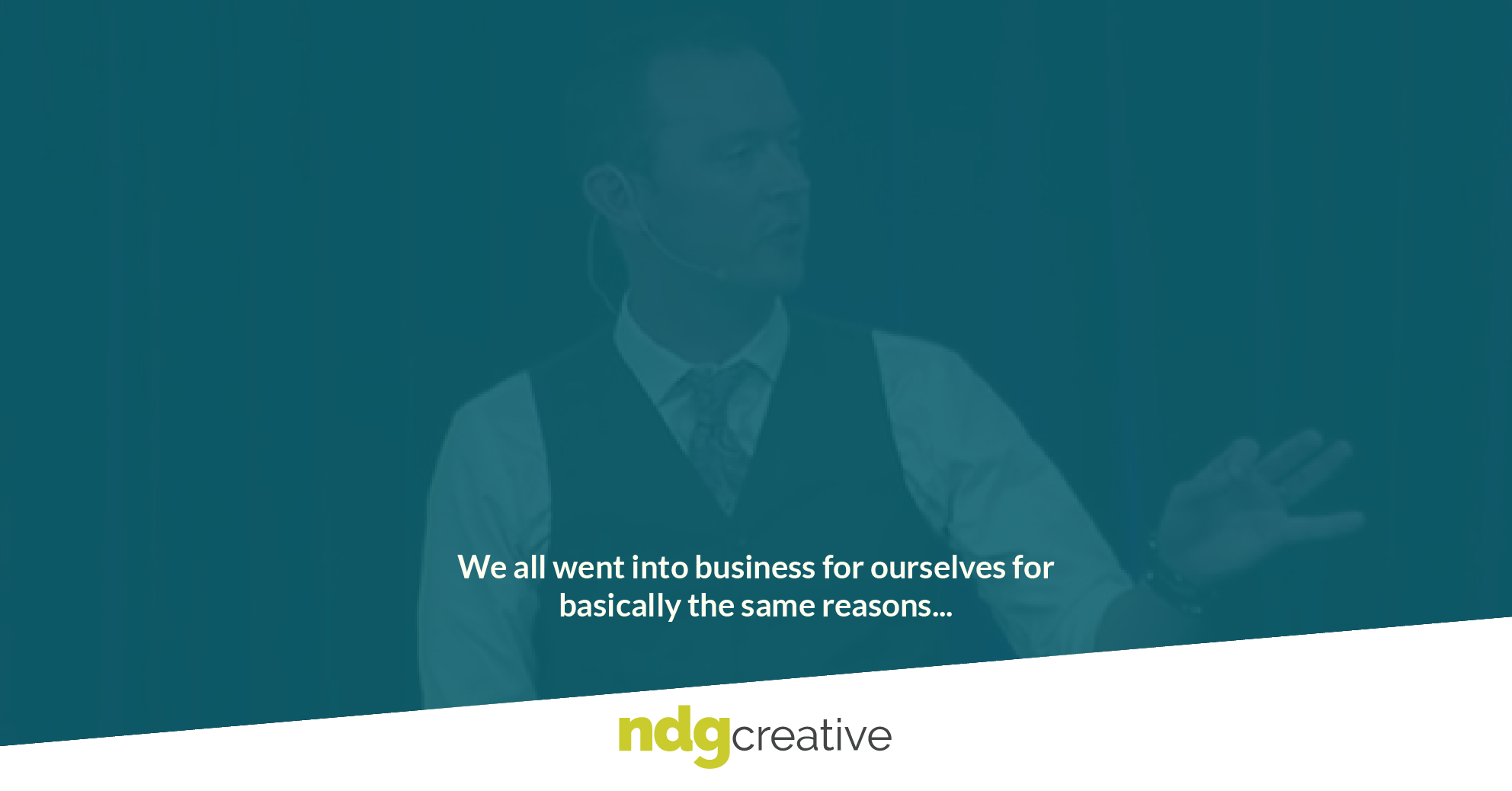
He described that the intersection of Seeing, Doing, and Knowing all the ins and outs of our clients, ourselves, and the data in our businesses is the key to actually reaching that pinnacle of entrepreneurship.

Matthew then explained that to be successful in business, it’s important to see what’s happening in the marketplace. To go in with your eyes wide open, and presents a new (to me) way of thinking about a target market… A target market, as defined by Matthew, is a group of people or organizations who have something in common. So far that’s pretty standard stuff. But then he goes on to say that these groups all have existing networks or methods of communication that we can hijack to execute our “ethical manipulation” (yes, you can laugh, we all did). What this means is that they have people already speaking to them, and places that they show up to be spoken to.
When you show up in the existing networks of your target market, they automatically understand that you are there to serve them.
So then, your big challenge is to get as tight and specific as you can bear with your targeting. As we know, having very specific marketing helps you speak directly to the people you can help. Now, this doesn’t mean you can’t sell to all kinds of other people, but your marketing is specific and direct.
To hone your messaging, Matthew suggests using the “supermarket checkout line test.”
You should be able to explain what you do to someone in a supermarket checkout line – be they a 6 year old boy or an 85 year old woman – and they should understand exactly who you help and how you help them.
So if you say, “I help middle-aged men lose weight,” that 6 year old is gonna say, “Oh! You should talk to my dad!” And that 85 year old is going to say, “Oh! You should talk to my son!” There is no confusion about what you do. Some more examples might be: “I help business owners make more money by writing books,” or, “I teach moms how to start their own business so they can work from home.” In my business, I might say, “I help women sell their amazing ideas online.”
No jargon. No fancy elevator pitch… just lay out what you do and who you do it for in a way that literally anyone can understand.
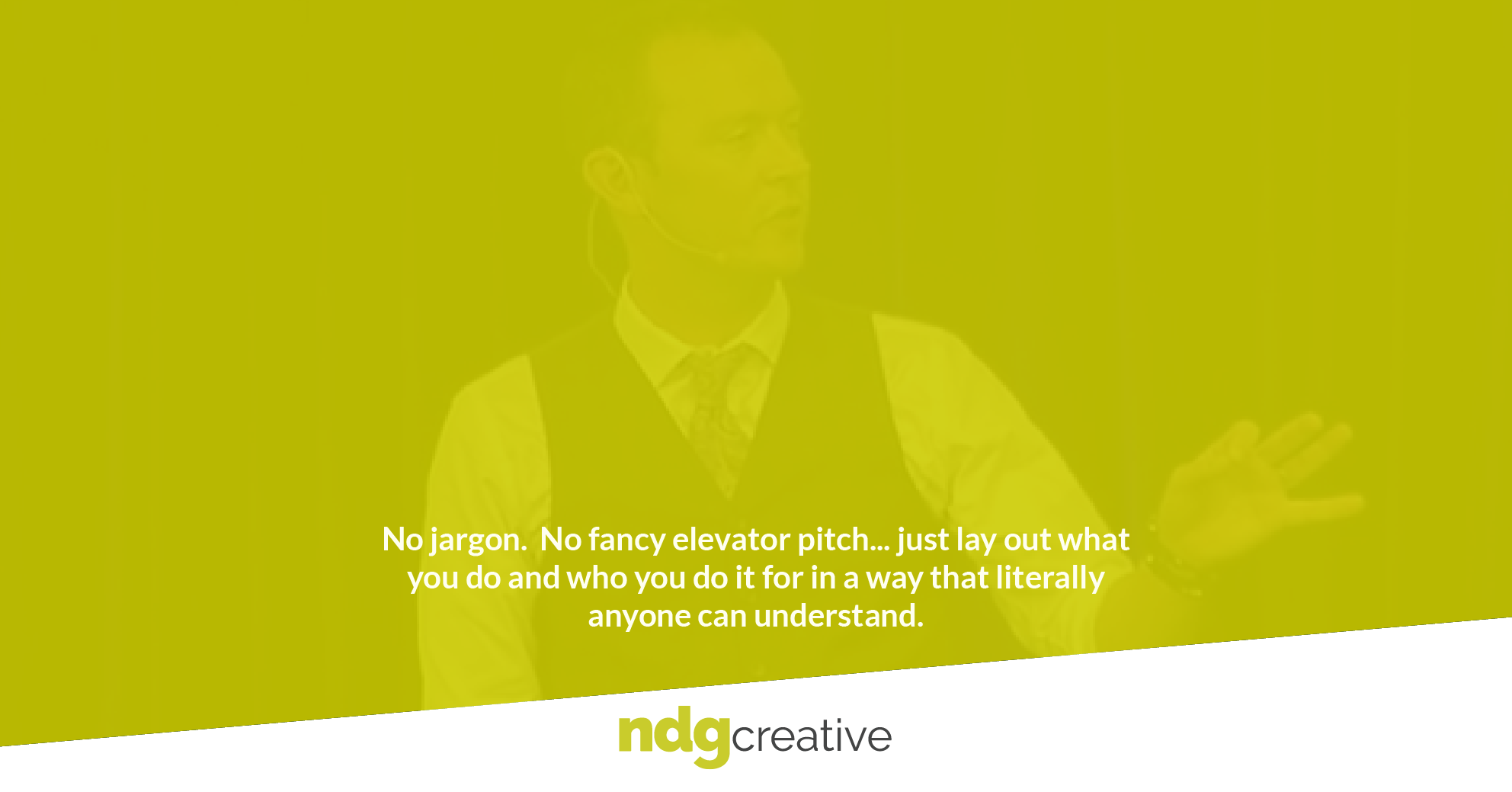
What this does for you is massively expand your likelihood of new business by way of referrals. And Matthew states that good old-fashioned referrals are far and away still the best source of clients in your business. If that supermarket checkout line stranger can’t turn around and explain what you do, then you’ve wasted an opportunity to reach their friends and family who could have benefitted from your help.
Ok, so… I (well, Matthew really) promised you some actionable advice about sales. Don’t worry, it’s coming.
First, for context and a bit of an #explodinghead moment.
In an organization, there is a certain amount of money allotted to each of the various departments. So which department do you think takes the largest piece of the pie?
Yes. Correct.
Sales.
The general structure of a successful organization goes:
Sales PEOPLE
(bring in the most money)
Marketing DEPARTMENT
(brings in lots of money)
Service Providers
(you know, actually SERVING THE CLIENTS)
Admin
(way down at the bottom)
So why on earth, in your business, do you flip that very logical pyramid on its head and start your day from the bottom up!!?!?!?!?
It’s all to do with our comfort levels. Fear.
Marketing, Admin, and Services are all within our comfort zone. We can do them without pushing ourselves to do the scary work of actually selling what we do. There’s nothing confrontational about spending 4 hours tweaking our headline text in Canva. Nobody can reject us or make us feel less than when we are choosing fonts for our latest graphic or writing a new blog post.
Outside of your comfort zone is the thing that will actually get you what you want in your business. Money – along with that Freedom, Fun, and Flow you crave.
Sales
So with that said… here are Matthew Kimberly’s Four Main Phases to Any Sales Process:
Phase One: Qualify your prospects
1. Ask Qualifying Questions:
Are you in the market for what I offer?
Are you the type of person who belongs here?
Can you afford me?
Are you here to have a sales conversation with me?
No more bait and switch strategy sessions. Lay it out for them:
“The purpose of this conversation is to work out whether or not we’re going to work together, right?”
2. Connect with your prospect:
Stupid, small disciplines lead to massive improvements. Ask questions and LISTEN to the answers.
3. Control the conversation:
Here’s what we’re going to do.
Here’s how the process works.
At the end of this call I’m going to ask for a yes or no and you have two days to give me an answer.Are you ready?
You can choose to be subservient or dominant. Be dominant. They want to be told what to do.
4. Credibility:
Testimonials, examples, case studies.
Phase Two: Clarify to your prospects what happens next
1. Identify their Problem:
Do they actually need this?
2. Outline your solution:
How can you solve this problem?
3. Explain the benefits:
Focus on how you can impact their physical health, finances, or emotional well-being. Every business solves these three problems in one way or another. Get creative. How does a business coach help your physical health, for example? Well, you’ll have less stress, better sleep, and more time to focus on your overall health and wellness. Sit down and brainstorm ways that what you do can help in all these areas.
4. Provide Proof:
Testimonials if you have them, or your own story.
Phase Three: Quantify your work and your fees
1. Make the offer:
Be proud of it, stand by it.
2. Incentivize:
Add on some sort of “free thing”. It could be a toothpick. It doesn’t have to be huge.
“If you make a decision today, I’ll take off $100.” “If you book before Friday we’ll have time for an extra session.”
3. Guarantees + Risk Reversal:
Give them an out. If you can’t give a guarantee of some kind, you shouldn’t be selling what you’re selling. It doesn’t have to be a full refund.
Some ideas:
“Try it for 30 days and then decide if you want to continue,”
“First week is just $1, and then you can decide if its for you.”
“No commitment, cancel at any time.”
Phase Four: Close the sale
1. Make it time sensitive
2. Create Scarcity
If it’s not a thing that is actually scarce, get creative.Some ideas:
“I only want to take 2 people this month.”
“I only want to work with 1 person from your industry.”
3. Ask for the Yes:
“Time to make a decision. Should I send your invoice?”
“So, are you ready to make a huge leap in your business?”
“This feels like a perfect fit. Are you ready to get started?”
All in all, this was an incredibly informative and enjoyable presentation, and I had several “aha” moments.

